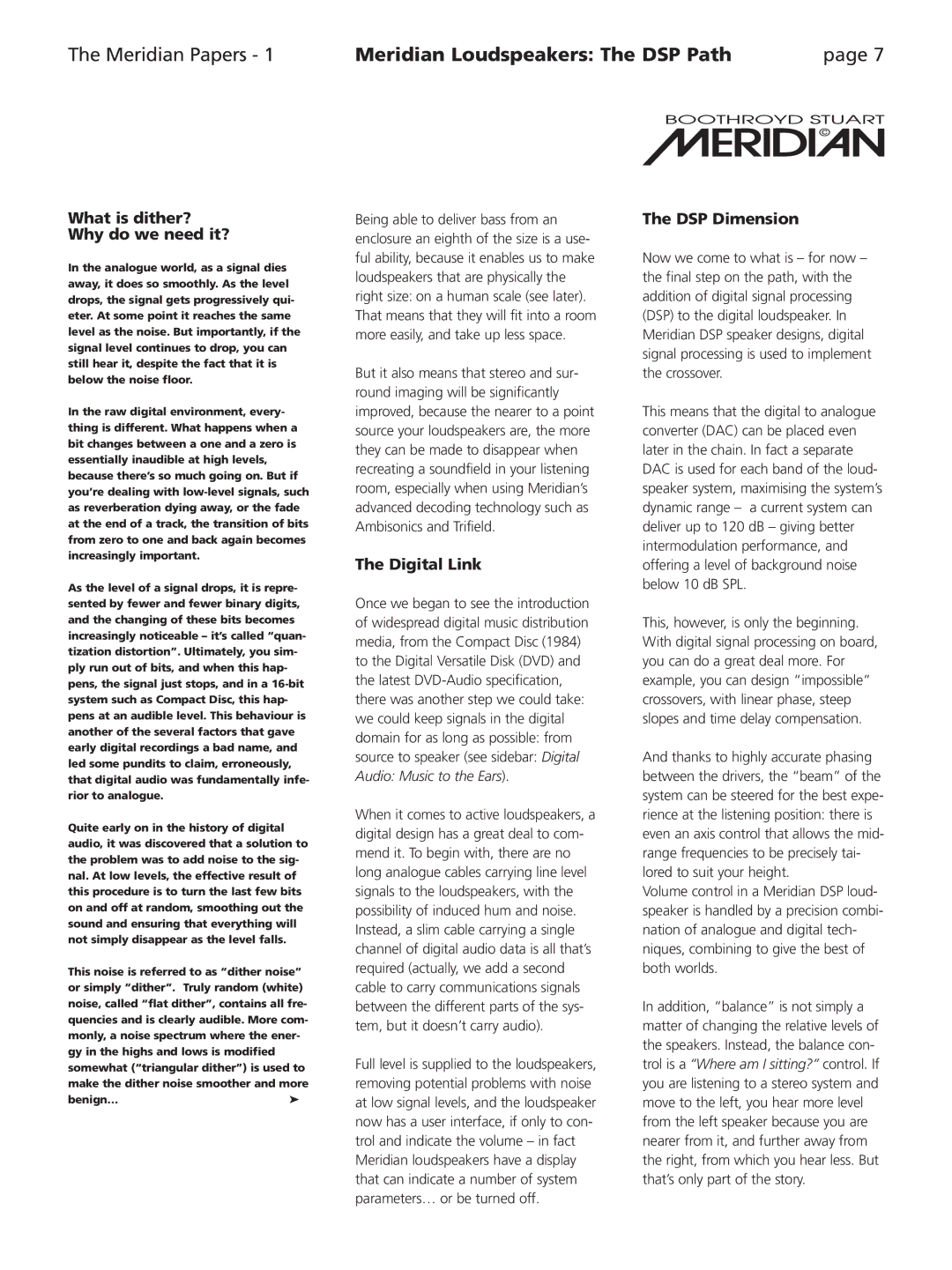Speaker specifications
Meridian Audio is a prestigious name in the world of high-fidelity audio systems, renowned for its innovation and commitment to delivering a superior listening experience. At the heart of Meridian's offerings are their high-performance speakers, crafted to provide remarkable clarity, precision, and an immersive soundstage.One of the key features of Meridian speakers is their proprietary Digital Signal Processing (DSP) technology. This advanced technology enables the speakers to deliver a more accurate representation of the sound source, ensuring that every nuance of the music can be heard. DSP allows for real-time adjustments to the sound based on the listening environment, optimizing performance regardless of the room characteristics.
Another standout characteristic of Meridian speakers is their exceptional bass response. The implementation of high-excursion drivers and specially designed enclosures allows Meridian speakers to reproduce deep and powerful bass without sacrificing clarity in the mid and high frequencies. This capability creates a balanced sound profile that can handle a variety of genres, from classical to electronic.
Meridian is also known for its active speaker designs, which integrate amplifiers directly into the speaker cabinets. This design minimizes signal loss and maximizes the efficiency of power delivery to the drivers, ensuring a dynamic and immediate response to the audio signal. Active designs also eliminate the need for external amplifiers and complicated wiring, simplifying setup and enhancing the overall user experience.
Additionally, Meridian speakers often feature unique technologies such as High-Resolution Audio playback and Meridian's proprietary Riva algorithm for enhanced sound staging. These technologies allow the speakers to support a wide range of audio formats, ensuring compatibility with modern high-res music files and providing a more involved listening experience.
Connectivity is another hallmark of Meridian Audio. Their speakers often include multiple input options, including digital and analog inputs, allowing for seamless integration into existing home audio setups or standalone operation. Many models also support wireless streaming protocols, providing convenience and flexibility for users who prefer to play music directly from their devices.
In summary, Meridian Audio speakers are a blend of cutting-edge technology, superior craftsmanship, and an unwavering commitment to audio excellence. With features like DSP technology, exceptional bass response, active designs, and versatile connectivity options, these speakers are designed to deliver a truly breathtaking audio experience for discerning listeners. Whether used in a dedicated home theater or a casual listening environment, Meridian speakers stand out as a hallmark of quality and innovation in the audio world.
